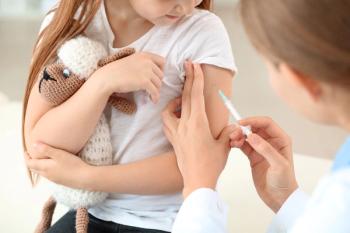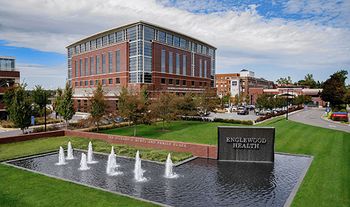
As New York sees surge in COVID-19 cases, hospitals brace for the worst. Again.
New cases have surged 80% as the city has become a hotbed for the Omicron variant. Healthcare systems in upstate New York have already been increasingly challenged in recent weeks.
Nearly two years after the COVID-19 pandemic first ravaged New York, cases are surging again and raising fresh fears about the capacity of the healthcare system.
New York has repeatedly set one-day records for new COVID-19 infections over the past two weeks and now leads the nation in new cases. The Omicron variant appears to be driving the surge.
The Omicron variant,
Some hospital systems, particularly in upstate New York, have struggled for weeks even before this new wave of infections. Biden has approved support to the state’s hospitals, including 30 staffed ambulance crews for upstate systems, New York Gov. Kathy Hochul said Tuesday. Earlier this month, Hochul issued an order directing some hospitals with capacity issues to delay non-urgent surgeries.
Now, with the Omicron variant spreading so quickly, healthcare experts fear a wave of new cases, compounded by holiday gatherings, could add more stress to an already strained system.
Dr. Denis Nash, an epidemiology professor at the City University of New York School of Public Health, said it’s too early to know if the Omicron variant is less potent than the Delta variant. He said there are encouraging signs it may not be as severe, but he worried about the high transmission of Omicron sending more patients to hospitals.
“The spread could be so intense and wide, we could easily have a surge in hospitalizations,” Nash said in a phone interview.
Even if the Omicron variant is only half as severe, if it’s two or three times as transmissible, hospitals could see a crushing wave of patients, particularly among those who aren’t vaccinated, Nash said.
“There’s a lot of anecdotal evidence to suggest it may be less severe,” Nash explained. “That doesn’t mean it won’t overwhelm the healthcare system just because of how transmissible it is.”
New York City Mayor Bill de Blasio is
'A real stress test'
So far, the surge in cases hasn’t translated to a dramatic spike in hospitalizations. Still, more than 4,300 COVID-19 patients are being treated in hospitals, an increase of 20% over the past two weeks. And as healthcare officials note, hospitalizations and deaths tend to rise in the weeks after an uptick in new COVID-19 cases.
Courtney Burke, chief operating and innovation officer of the Healthcare Association of New York State, said hospitals are preparing for a possible surge in cases tied to the Omicron variant.
“We’re anticipating Omicron could be a challenge in the coming weeks,” Burke said in a phone interview.
Like the rest of the country, hospitals in New York are facing severe staffing shortages, particularly among nurses, Burke said. There is concern the Omicron variant could lead to infections among healthcare workers, which would be the last thing understaffed hospital systems need at this point.
“Even if Omicron is a more mild strain of COVID, if you have people who have to be out, that does put more burden on staffing,” Burke said.
Some hospitals are finding that two monoclonal antibody treatments that have helped some COVID-19 patients don’t appear to be effective against the Omicron variant,
One monoclonal antibody treatment, sotrovimab, made by GlaxoSmithKline and Vir Biotechnology, is showing success against the latest variant, The Times reported. On the upside, the FDA is poised to approve two antiviral pills from Pfizer and Merck this week,
The New York-Presbyterian system said in a statement it has seen “a slow but steady increase in the number of COVID-related hospitalizations across our system. However, all of our hospitals continue to operate normally.”
New York City has a high COVID-19 vaccination rate compared to most of the country. About 72% of the city’s residents are fully vaccinated. Even with the Omicron variant, the vaccines are expected to continue to protect people from serious illness, hospitalization and death, federal officials have said.
However, Nash said it’s not clear if the vaccines will prevent people from getting infected with the Omicron variant or greatly reduce the risk of transmission.
“This is a real stress test of the vaccines in New York City,” Nash said.
Concerns of mixed messages
While the New York City metro area braces for another wave of patients, systems in central and northern New York may face more problems due to low vaccination rates. Only about half of all residents are vaccinated in some rural counties.
When asked about the impact of the Omicron variant in areas with low vaccination, Nash said, “That’s the million dollar question.”
Chip Partner, a spokesman for the University of Rochester Medical Center, said the system has been filled with patients even before the emergence of the Omicron variant. He said the system’s hospitals tended to be at higher capacity even before the pandemic.
In recent weeks, the growing number of COVID-19 patients has placed more burdens on the system. The medical center has been among the state’s hospitals that has had to postpone some surgical procedures.
Staffing has been a problem, like it is everywhere, Partner said. Some patients that are stable enough to be discharged remain in the system’s hospitals because there are no beds available at long-term care facilities. Rochester’s hospitals have also been treating more patients who deferred care for other health issues and now can't wait any longer.
Nonetheless, the rise in COVID patients presents a daunting problem and the system has implored the community members to get vaccines and boosters.
“The real capacity issue is going to be with us until we can lower these COVID hospitalizations,” Partner said.
The rapid spread of Omicron seems startling since the first U.S. case wasn’t identified until Dec. 1. Nash said the speed is “totally phenomenal,” but not necessarily surprising based on the reports from South Africa and the United Kingdom.
The swift spread in New York is undoubtedly being driven by heavy tourist traffic and the fact that the city is open, even though the state is requiring masks or proof of vaccination in indoor spaces. It’s also what used to be known as “cold and flu season.”
“It’s kind of open season for a variant like Omicron,” Nash said.
New York’s governor has repeatedly said the current challenge doesn’t compare to the frightful early days of COVID-19, or even last winter, due to the availability of the vaccines. Nash echoed the sentiments.
“We’re in a very different place because we have the vaccines,” Nash said.
But he quickly added, “For some people and some geographic areas, it is going to feel like last winter with lots of people in the hospital, lots of deaths.”
“It’s really the unvaccinated people that should be panicked and worried right now,” he said.
Nash said he is optimistic “the news will be pretty good for people who are vaccinated and boosted to avoid a bad outcome if they are infected.”
Still, Nash said he worries the federal government could be sending people mixed messages about the Omicron variant to those who are vaccinated.
Federal officials have said it’s generally OK for vaccinated people to gather for the holidays and live their lives. At the same time, if even vaccinated people don’t scale back some activities, Nash said it raises the risk of spreading the Omicron variant farther and adding more stress on hospitals.
Even if vaccinated people don’t get sick, they may have to isolate or miss work or school if they're infected. They could spread the virus to more healthcare workers who may have to quarantine and won’t be able to treat patients.
If the Omicron variant spreads widely among those who are vaccinated, Nash said, “There could be major consequences not in relation to health but in people’s ability to function.”
At a bare minimum, New York hospitals, which have endured the worst of the pandemic almost from the very beginning, have plenty of experience to draw on in the coming weeks.
Burke said hospitals have better systems in place for managing patient loads and communicating with staff.
“It’s like, prepare for the worst and hope for the best,” Burke said.






























































































